Specifications
For the nit-pickers and nerdy ones here, I’m giving the specs and technical sheets. For all the others, you can just go to the next page to see how the M11S performs.
Sabre ES9038PRO + THX AAA 788+
Like every player from the brand nowadays, the FiiO M17 is packed with ESSTech chips, ES9038Pro in this case. A popular chip but not seen in many devices, for two reasons.
First, this is a top-of-the-line chip, costing more than its usual Q2M counterpart, usually found on DAP or portable DAC (like the M11S for example).
Second, this is a heavily taxing DAC, that needs a very solid supply-line upfront to be correctly used. Which explains why you’ll mostly see this chip in desktop gears, like SACD/Blu-Ray players or home-theatre processors.
It offers every high-end feature you’d expect, namely:
- full high-resolution PCM decoding, up to 32bit/769kHz
- native DSD support up to DSD1024 and DSD256 via Dop
- extended DSP options (roll-off, soft mute,…) and fully programmable FIR filter with 7 presets
- an astoundingly high Signal-to-noise Ratio, up to 140dB
- full I2S/DoP/DSD/SPDIF input + 8-channel audio mapping
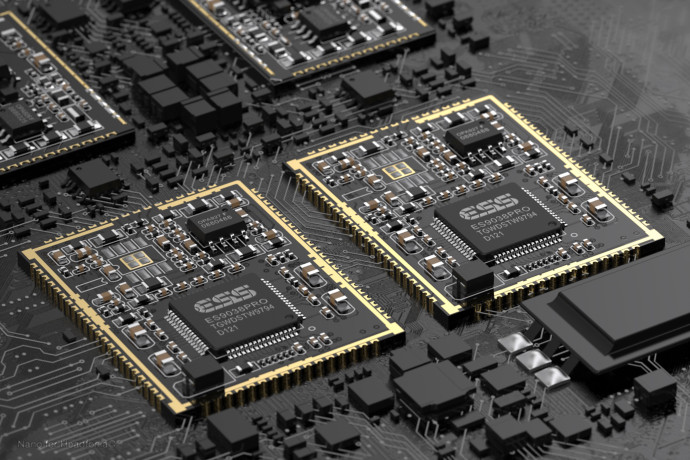
As usual, you can top that with 32-bit HyperStream II architecture, Time Domain Jitter Eliminator and a mono mode for those who seek the highest performance, in a multi-channel system, or a dual-mono setup like the one used in FiiO’s players.
Downstream, the M17 also get the glorious THX-AAA 788+ amps, the upgraded version of the one found in all and every player since the first M11 Pro, offering 225% more output power than the previous generation – 35.5Vp-p… insane!
Needless to say that you should be able to drive EVERY headphone/IEM on the market with this setup.
CPU and RAM
Once again, FiiO made the right choice and pushed a Qualcomm 660 CPU in the FiiO M17, with 4 “big” cores and 4 “small” cores. A chip is much more powerful than the previous Samsung Exynos and a league above Mediatek’s entry-level system.
Most of the time, the player will use low-power cores to achieve basic tasks and will rely on the high-power one only when really needed.
Add to that 4Gb of LPDDR5 Ram 64Gb of internal memory, a faster-operating frequency (up to 2.2GHz), and the M17 performs more than decently and should be (almost) future-proof for a DAP. Switching between various apps is instantaneous, searching for your files is faster, and most of all, boot-up time is 5 times shorter than before.
In this regard, the only player challenging the FiiO M17, in my list, would be the iBasso DX320, which gets more memory and the newer Android version.
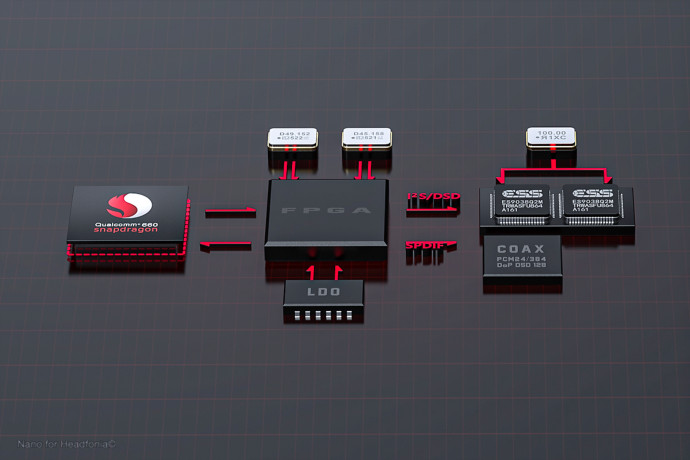
FPGA + NDK crystal oscillator
To ensure the best performances, FiiO developed a fourth-generation FPGA chip with “more advanced algorithms, more accurate clocks, and even further reduced jitter”, combined with an XMOS XUF208 chip. Unlike Chord which uses an FPGA chip as a DAC, here it’s used as a middle-man between the SPDIF circuitry and the dual ESS DAC – working in I2S/DSD.
Add a set of two custom Japanese NDK femtosecond crystals, working hard to ensure everything is phase-locked / 100% bit-perfect, and you have your full DSD512 / PCM 32bit/768kHz support.
All of those chips are covered by custom anti-EMI modules that ensure perfect isolation from each other and avoid the annoying buzz while playing files from your streaming app, or just when you use Bluetooth.
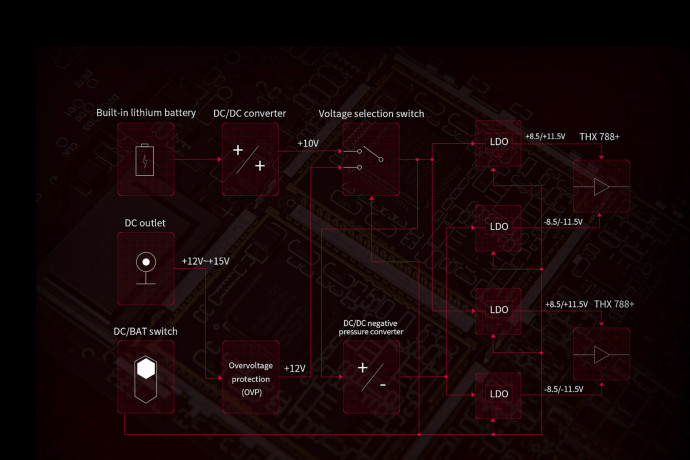
WiFi
The FiiO M17 supports 2.4Ghz and 5Ghz bands for faster and steadier connections. DNLA/UPnP are all there and of course, you can access a wide range of high-definition streaming platforms: Apple Music, Tidal, Amazon, Spotify, Qobuz, Deezer, Napster, TuneIn, etc..
And, thanks to the new CPU downloading files and music is now faster, with download time taking seconds, instead of minutes.
Bluetooth
The FiiO M17 does it all SBC, aptX, apt-X HD, LDAC, LHCD/HWA, you name it, it’s supported.
The Hi-Res Audio Wireless Certified logo is well-endowed at the back of the player, with the Hi-Res Audio logo and THX blazon. Like the Shanling M6 21 or the M11S, the M17 supports duplex Bluetooth allowing you to use the player as a Bluetooth receiver with a smartphone, computer, or any Bluetooth emitter.
The Bluetooth 5.0 chip can transmit in SBC/AAC/aptX/aptX-HD/LDAC but only supports SBC/AAC/LDAC when receiving.
Basically, with a compatible headphone or receiver, you’ll always get the best quality available. Of course, if you have a TOTL IEM or a massive can, a wired connection will always be the best one.
Do you still want the full specs? Ok, here they are for you.
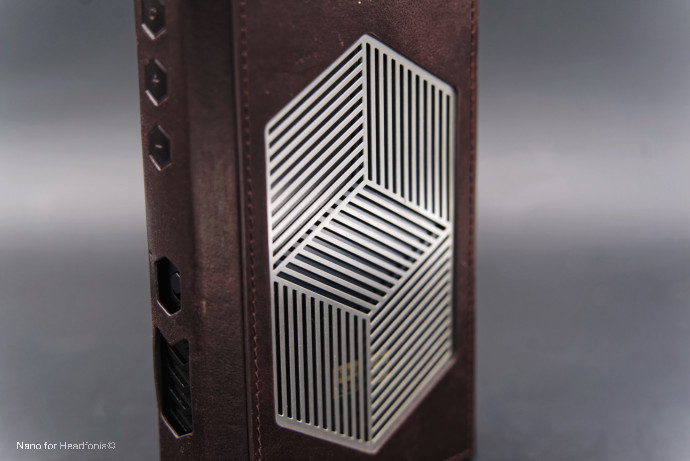
Full specs
- Model: FiiO M17
- Type: Digital Audio Player
- OS: FiiO OS
- CPU: Qualcomm Snapdragon 660
- RAM: 4Gb LPDDR5
- Rom: 64 Gb (4Gb for the system)
- DAC: 2x ES9038PRO
- Sample rate : PCM : 8Hz – 768Hz (8/16/24/32bits) native – DSD64/128/256/512 – MQA 8X unfold
- System clock: Full synchronization technology with 4rd Gen FPGA processor and dual Japanese crystal clock
- Outputs: 3.5mm TRS // 2.5mm TRRS // 4.4mm Pentaconn // 6.35mm TRS // Coaxial // USB-C
- Input: USB-C // Coaxial
- Screen: 5.99″ 1080×2160 IPS Screen from LG
- Micro SD: SDHC / SDXC (single slot)
- WiFi: 2.4 GHz / 5 GHz support
- Streaming supported directly – Full Google Play Support
- Bluetooth support: SBC, apt-X, apt-X HD, LDAC, HWA, (AAC receive only)
- Duplex Bluetooth: the player can emit and receive music
- Battery: 3.8V 9200mAh Li-Polymer
- Quick Charge: yes, QC2.0/3.0, PD2.0, DC12V/1.5Ah, 9V/2A, 5V/2A // DC Power supply
- Battery life: 10h with wired headphones (3.5mm), 8h with a Balanced headphone
- Charging time: around 4.5h
- Size : 156.4mm x 88.5mm x 28mm
- Weight: 610g
- Price: $1799
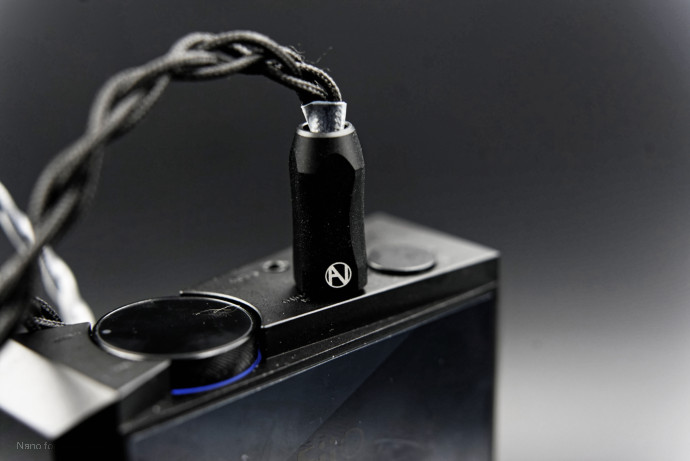
Line Out
- Frequency Response : 20Hz – 50kHz (-1dB)
- THD: 0.0006%
- SNR: >120dB
- Crosstalk: 103dB
- Line Level: 1.9V
- Noise Floor: <2μV
3.5 mm Headphone out (over-ear headphone mode)
- Output power : 740mW @16ohm / 500mW @32ohm / 63mW@300ohm
- Frequency Response : 20Hz – 20kHz (-0,5dB)
- THD : > 0.0007%
- SNR : > 120 dB
- Crosstalk : > 75 dB
- Output impedance : < 1 ohms (32ohms)
3.5 mm Headphone out (Enhanced over-ear headphone mode)
- Output power : 1400mW @16ohm / 1100mW @32ohm / 126mW@300ohm
- Frequency Response : 20Hz – 20kHz (-0,5dB)
- THD : > 0.0009%
- SNR : > 122 dB
- Crosstalk : > 75 dB
- Output impedance : < 1 ohms (32ohms)
2.5mm / 4.4mm Headphone out (over-ear headphone mode)
- Output power : 1500mW @16ohm / 3000mW @32ohm / 250mW @300ohm
- Frequency Response : 20Hz – 50kHz (-0.5dB)
- THD : > 0.0007%
- SNR : > 121dB
- Crosstalk : > 108 dB
- Output impedance : < 2 ohms (32ohms)
2.5mm / 4.4mm Headphone out (enhanced over-ear headphone mode)
- Output power : 1500mW @16ohm / 3000mW @32ohm / 500mW @300ohm
- Frequency Response : 20Hz – 50kHz (-0.5dB)
- THD : > 0.0009%
- SNR : > 121dB
- Crosstalk : > 108 dB
- Output impedance : < 2 ohms (32ohms)
Time to plug the player now!
The article continues on Page four, with the part on sound, after the click here
Page 1: about FiiO
Page 2: UI, Usage, Bundle
Page 3: Technical specifications
Page 4: Sound performance






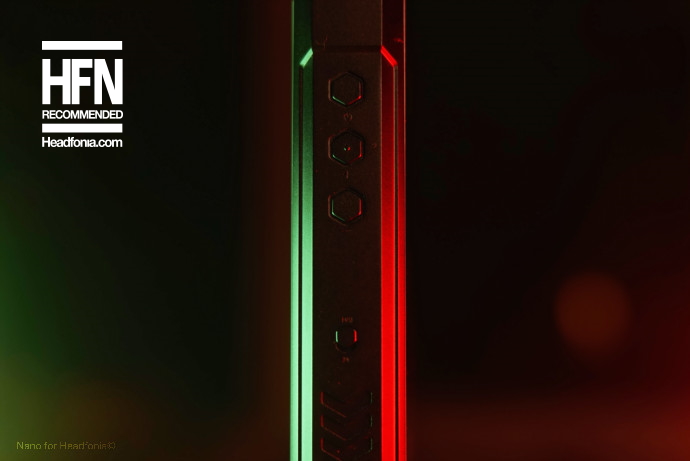

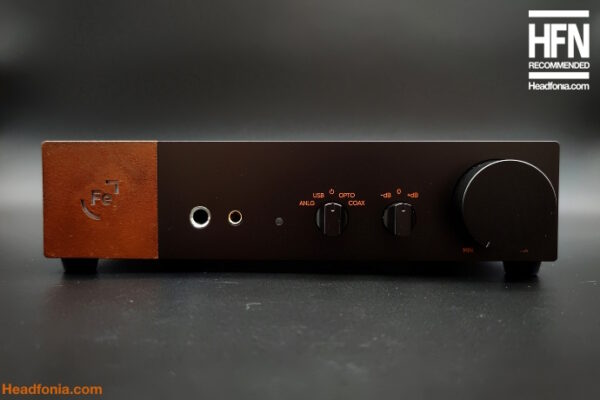
MhtLion
Great review. This DAP sure has amazing features and looks like a possible replacement for desktop DAC. One question please. With Apple Music, can you download the music to it or it’s streaming only?
Offramp
Nice write up, I’ve had my eye on this for a bit. It has the coaxial output which I want vs the optical on the AK’s. I already own an AK player.
This review rather made up my mind even tho I’d rather have a AK dac converter which I don’t own and looks like I never will. Another Sabre on the way.
Still in the background,
Still reading around.
MP3J
Really enjoyed the in-depth review! The pros and cons sections really helped me make an informed decision about the FiiO M17. Your detailed analysis of the sound quality and comparison to other similar products was particularly useful.